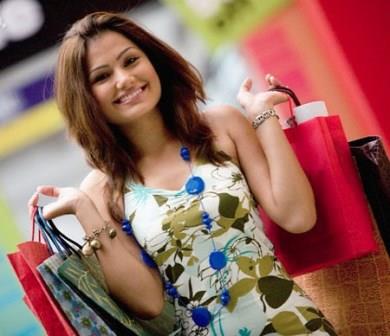The rising middle class in Brazil hides profits for brands!
 Brazil has the sixth highest GDP in the world and its population is approximately 200 million, of which a high percentage belongs to the middle class (with income of 1-5 minimum wages). In particular, the country has made significant economic progress between 1988 and 2013 where the GDP has doubled, so it is estimated that in the late 90s to the present, about 25 million Brazilians were upgraded and entering this class. In fact it now represents 70% of the total population and 50% of total domestic consumption expenditure.
Brazil has the sixth highest GDP in the world and its population is approximately 200 million, of which a high percentage belongs to the middle class (with income of 1-5 minimum wages). In particular, the country has made significant economic progress between 1988 and 2013 where the GDP has doubled, so it is estimated that in the late 90s to the present, about 25 million Brazilians were upgraded and entering this class. In fact it now represents 70% of the total population and 50% of total domestic consumption expenditure.
Yet it is estimated that by 2030, the population of the middle and upper middle class will increase significantly, which will mark major changes in consumption patterns in the country. However, the class in question is underused and neglected by the international business segment, which hides great opportunities for profits and should be the target for marketing managers, as it already happens with the middle classes in China and India.
So what are the key characteristics and consumption patterns of the emerging social class?
– It is mainly consisted of young population
– It grows at a higher rate than the general population
– It inhabits in more upscale areas, having access to more designer brands. In this context it is worth noting that the southeast region of Brazil will be until 2024 part of the country with the highest consumption rates, but the northeastern region is expected to experience the fastest growth in consumer spending.
– It regards consumption as an indicator of social status and improved living standards and often buy products spontaneously. Indicatively, approximately 50% of Brazilians characterize the purchase of consumer goods as one of their favorite activities during their free time and they mostly visit major shopping centers for this reason.
– Longs increasingly a good quality / price ratio. The increase in income of Brazilian households as a result of the economic prosperity of the country has led middle-class Brazilians to market more sophisticated and branded goods in product categories such as cleaning supplies and personal care (eg detergents and shampoo)
– Determining factors for the purchase of a product beyond the value is to provide clear information about the benefits and instructions on its use, as well as recommendations from friends, relatives and acquaintances.
– The costs of a typical middle-class Brazilian family for food and beverages account for 39% of their income for household items and housing amount to 23% and for care and toiletries 4%.
household items and housing amount to 23% and for care and toiletries 4%.
– This class gives much attention to the appearance of the 59% of Brazilians saying they buy clothes that are suitable for outputs. Furthermore, Brazil is the third largest cosmetics market after Japan and the USA. Generally, buying health and beauty products in Brazil expected to increase 12% annually from 2012 to 2017.
– 61% of people belonging to this class have credit cards. About half of the credit transactions of the Brazilian consumers regard appliances and clothing. Indeed they prefer to buy expensive products paying with small doses for a longer time. The largely depend their purchasing decisions by the credit terms offered to them.
– They prefer to buy food and drinks from local shops instead of large supermarket chains, and trust local retailers that provide payment facilities.
– They select mostly small packaging in retail stores for greater ease on transport and use.
– A large part of the Brazilian consumers use the internet and social media to search for and purchase products. Typically, it is estimated that sales made in 2013 in the e-commerce sector grew by 25% compared with 2012. It is estimated that by 2016 Brazil will be the fourth largest market in the world in e-commerce. Indeed most of the electronic trading of Brazilian consumers concern the purchase of travel services, electronic devices (eg smartphones), books, clothes and shoes, while an increasing trend is recorded in the electronic household products, beauty and health.
 In conclusion, Brazil represents a country that presents great opportunities for exporters. Private consumption remains the main driving force of the economy, to a much greater extent than in other emerging economies. In China, for example, consumer spending accounted for only 36% of GDP in 2014, compared with 63% in Brazil. Moreover, the increasing expansion of the urban middle class in conjunction with the concentration of income in the newest part of the population that belongs to it, mean that the target group constitutes a potential lucrative market for brands and should no longer be underestimated.
In conclusion, Brazil represents a country that presents great opportunities for exporters. Private consumption remains the main driving force of the economy, to a much greater extent than in other emerging economies. In China, for example, consumer spending accounted for only 36% of GDP in 2014, compared with 63% in Brazil. Moreover, the increasing expansion of the urban middle class in conjunction with the concentration of income in the newest part of the population that belongs to it, mean that the target group constitutes a potential lucrative market for brands and should no longer be underestimated.
References : Fernanda Hoefel, Dikran Kiulhitzan, Julia Broide and Marina Mazzarolo (2015), Pablo Barros (2014), Mariana Castiglioni, Rafael Garcia Meunier, Rogério Hirose, Silvana Lee, Thais Rios, and Fábio Stul (2015),www.warc.com, www.bcgperspectives.com, www.euromonitor.com, www.denmarkbrazil.com, www.dkconsultants.gr.

